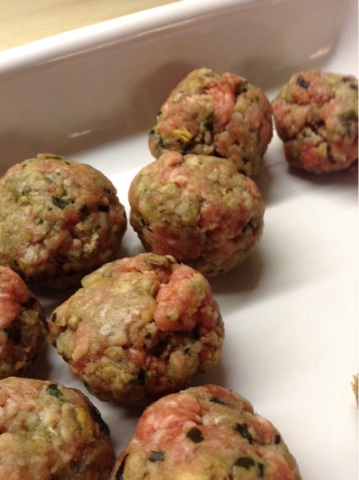The classic mince pie. Can't be beaten. Serve warm; prize off the lid, top with a dollop of clotted cream, replace the lid and prepare for deliciousness.
For 12 - 15 mince pies
8 oz plain flour
pinch salt
2 oz white vegetable fat (eg Trex), cut into 2 cm cubes
2 oz butter cut into 2 cm cubes
2 - 3 tbsp very cold water
a jar of mincemeat
a splash of milk
sprinkling of sugar
- To make the pastry, put the flour,salt, butter and vegetable fat into a stand mixer bowl. Mix with the 'k' beater until the mixture resembles breadcrumbs - it doesn't mater if there are still a few small lumps of butter. This can also be done in a food processor (beware of overmixing, it mixes very quickly).
- Add two tablespoons of the cold water and mix slowly until the mixture begins to clump together and a dough begins to form. If it still looks dry, add another half a spoon of water and mix some more; don't be tempted to put too much water in at a time. At this stage it is important not to work the dough too much, or it will become tough (this is all to do with the amount of gluten that forms in the dough if you overwork it, or if you add too much water- you don't want pastry dough to be made too elastic by the gluten, so you work it as little as possible). As soon as you have clumps of mixture stop mixing and try gently squishing the clumps together with your fingers. If a dough forms without flakes coming off, it's ready and you can tip it onto a work surface and gently squish it all together to form a ball of dough.
- If you're not in too much of a rush, wrap the dough in cling film and put it in the fridge for 15 minutes. Apparently this makes it easier to roll out. I often am in too much of a rush, so I roll it straight away. Putting it in the fridge to rest is supposed to allow the gluten time to relax, but I'm blowed if the gluten is going to get to relax if I don't!
- Flour the surface lightly, flour the rolling pin and roll the dough to thickness of about 4mm. Using pastry cutters, cut out 12 circles big enough for your bases and 12 smaller circles for the lids (a regular mince pie tin needs bases about 7cm diameter and lids about 5.5cm). You will need to squish the dough trimmings back together and re-roll to get the full number. I have read that you shouldn't re-roll the trimmings more than a couple of times, to avoid tough pastry, but I just keep going until I've used up all the pastry, normally ending up with 15 pies for this amount of pastry.
- Preheat the oven to 180 C
- Lay the bases in the mince pie tin, put in about 1 tsp of mincemeat (I always use the mincemeat as it comes from the jar, although you can make your own, or add extras like chopped apple and brandy to the jar).
- Top with the lids, very gently pressing them onto the bases. (Because we serve the hot pies with clotted cream, we like to prize off the lids and put the cream inside, so you don't want the lids too stuck down. You can always just dollop the cream on top of the cooked pie if you prefer.)
- With the tip of a sharp knife make a couple of little slits in the top of each pie, then brush them with a little milk and sprinkle with granulated sugar.
- Bake in the hot oven for about 15 minutes, then transfer to a cooling rack. If you want you can give them a dusting of icing sugar before serving.
- Serve with proper Cornish or Devon clotted cream, although I believe some people like them with brandy butter or single cream.

 |
| Please don't eat me! |
















































